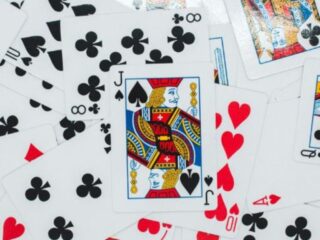
Poker game requires a certain level of skill, luck, and strategy. But even the most experienced players can miss out on vital signs in the game – known as ‘tells.’ Tells are subtle clues or behaviors indicating how strong your opponent’s hand may be; they can provide you with invaluable information about the cards they are holding.
Learning to spot tells is essential to becoming a successful poker player; mastering this skill can help you gain an edge over your opponents. In this article, we will discuss common tips to look out for when playing poker so that you can make more informed decisions at the table.
What are Tells in Poker?
Tells in poker are subtle clues that can be used to gain insight into the strength of an opponent’s hand. They are a crucial part of the game, and experienced players learn to use them as a tool to help give them an edge over their opponents. Tells can manifest themselves in various ways, from physical body language like facial expressions and hand movements to verbal indications such as the choice of words and tone of voice used. Players must know how to interpret these signals correctly to gain an advantage.
The Importance of Tells in Poker
When you play poker online, it can show you what cards your opponent has. They can be things like facial expressions or words they use. Knowing these tells helps you make better decisions in the game, so it’s essential to learn how to spot them.

Common Poker Tells
Physical tells are essential clues to look out for in poker. One of the most common physicals tells eye movement. For example, a player may glance at their chips when they have a strong hand or stare intently at an opponent’s chips when they want to bluff.
- Other physical tells include rapid breathing, sweating palms, fidgeting, and body language such as leaning forward or backward.
- Verbal tells can also be revealing. For example, players with firm hands may use terms like “I bet” or “I call” more confidently than weaker ones.
- Aggressive betting and raising could indicate strength while hesitating before making a decision could signal weakness. Look out for players who talk too much, which can show frustration or nervousness about their cards. Verbal tells can also be revealed through tone of voice; a softer tone might suggest a weak holding, while a louder one might indicate strength.
- Finally, look out for players who make excuses about why they folded; this could mean that they had a strong hand but did not have the guts to call your bet.
Observing these physical and verbal cues from your opponents can give you helpful information about their cards and help you make better decisions in poker. So please pay attention to your opponents’ behavior and use it to your advantage!
Reading Body Language & Expressions
Facial expressions in poker can tell signs of a player’s hand strength. A strong hand can be indicated by a smile, relaxed facial muscles, eyebrows raised in interest or intensity, and direct eye contact with opponents. On the other hand, a weak hand may show itself through frowns, averting eyes away from the table, biting lips, or tensing the jaw and mouth area. When bluffing, at least some effort to remain neutral should be made, as giving away too much information could ruin the entire strategy.
Players with firm hands typically look more confident and relaxed; they may appear calm and collected with straight posture and eyes fixed on the table. They may also reveal subtle signs such as slight smiles and nodding heads in agreement or understanding while contemplating their next move. Additionally, they might try to intimidate their opponents by maintaining intense eye contact or leaning into them when making decisions.

On the other hand, players with weaker hands may exhibit more obvious tell-tale signs, such as frowns or furrowed brows, while studying their cards. They might look down at their chips often or glance around the table before folding. Additionally, some players might be caught fidgeting in discomfort as they struggle to decide what to do next; this is usually followed by an almost imperceptible sigh of relief when they finally fold their cards away from the view of others at the table.
Learning to interpret these physical tells can give poker players an edge over their opponents; it is key to understanding your opponent’s strategy and making informed decisions during gameplay. In addition, by paying attention to facial expressions, clues like these can help you make better predictions about what your opponents are holding – giving you an advantage at the poker table!
Conclusion
Physical and verbal tells are essential clues to look out for when playing poker. For example, you can gain valuable information about your opponent’s hands by observing physical cues such as body language, facial expressions, eye contact, and another movement. In addition, tells can reveal important information about their hand strength, potential bluffs, and strategies.
Paying close attention to these subtle hints can improve your chances of succeeding at the poker game. Keep in mind, however, that all players have different tell-tale signs; be sure to get familiar with your opponents so that you will know what to look out for when playing against them! You might increase your winnings at the poker table with enough practice and observation.


